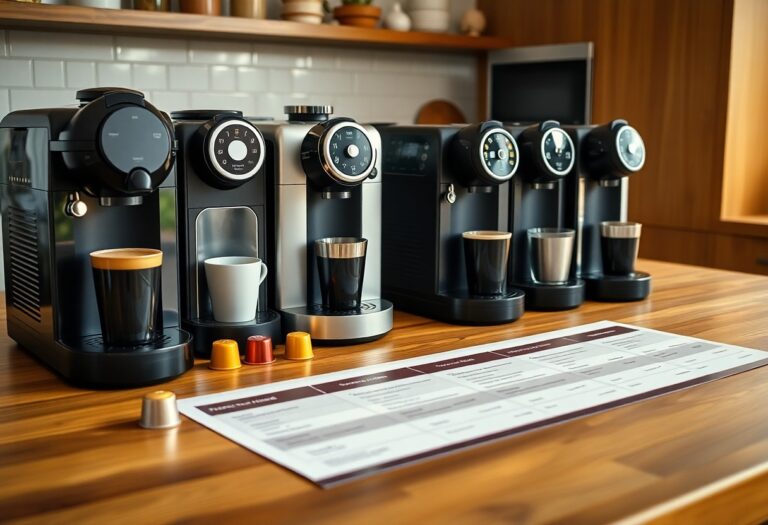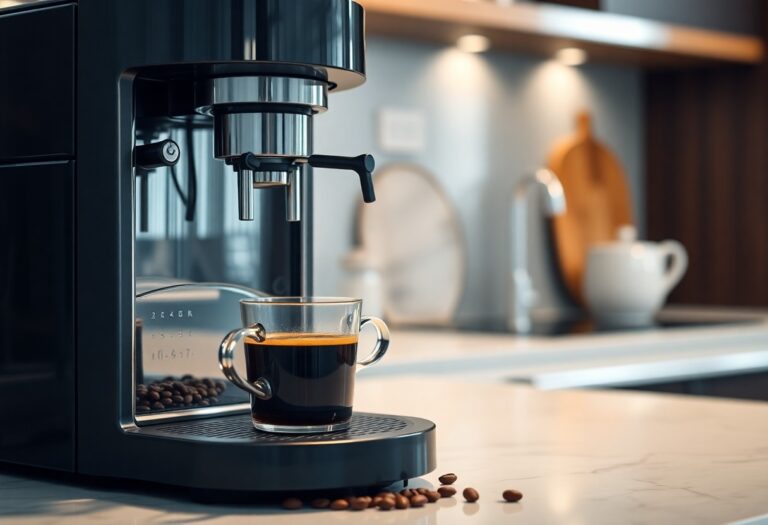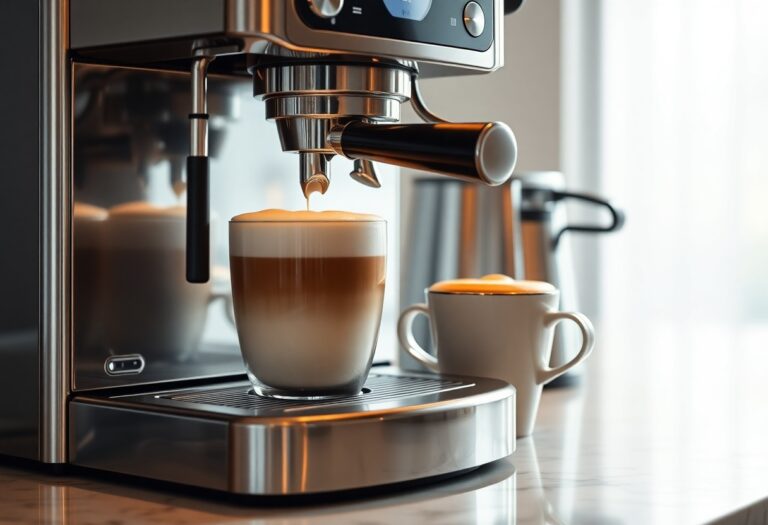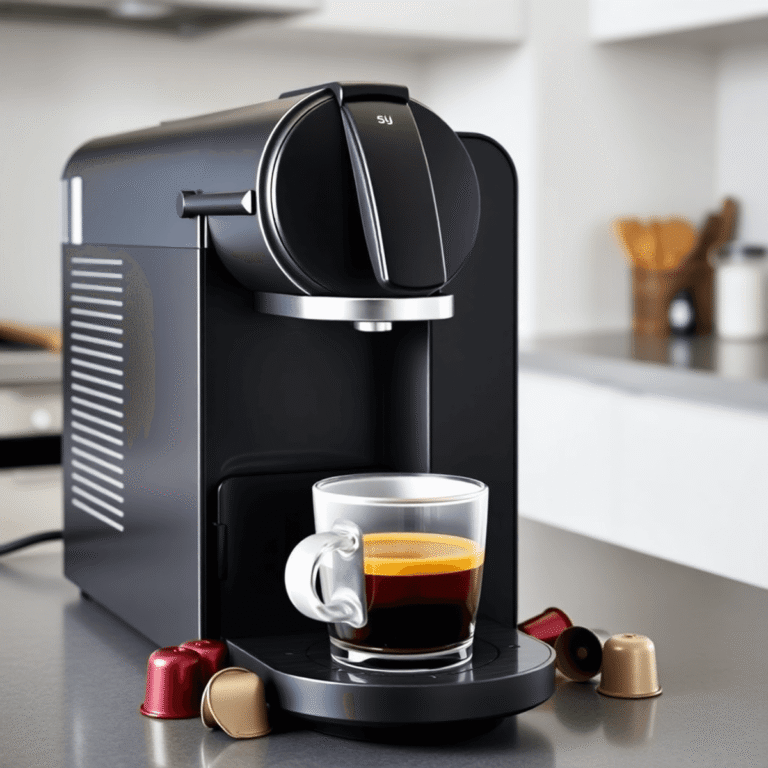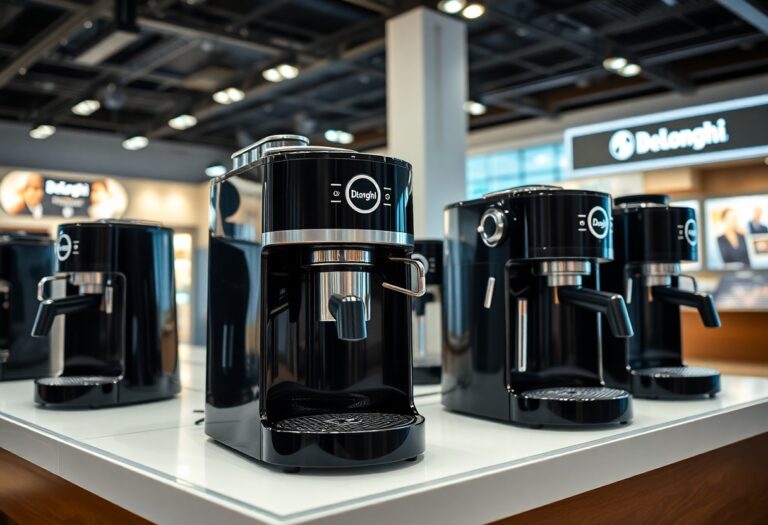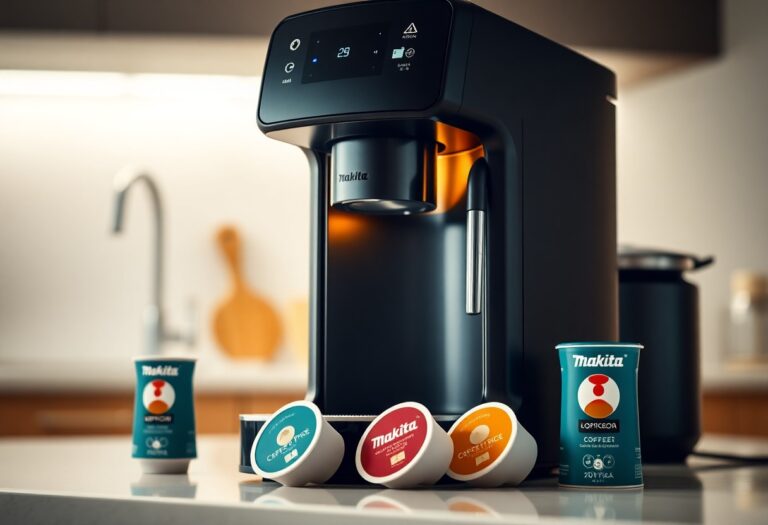What is the Best Coffee Espresso Machine Combo – Dual Function
Machines that combine the functions of brewing coffee and making espresso offer unmatched versatility in your kitchen. When choosing the best coffee espresso machine combo, you want one that not only delivers a delightful cup but also stands the test of time. Look for features such as ease of use, durability, and consistency to ensure you’re making a worthwhile investment. In this guide, you’ll discover what to consider when selecting a dual-function machine that suits your lifestyle and taste preferences.

Key Takeaways:
- Espresso coffee machines with dual functions offer versatility, allowing users to brew both espresso and regular coffee from the same machine, saving space and simplifying the coffee-making process.
- Look for machines that feature adjustable settings for grind size, strength, and temperature, providing a customizable brewing experience tailored to individual preferences.
- Consider the build quality and design of the coffee espresso machine, as reliable materials and a well-thought-out layout can enhance durability and ease of use.
- Integrated grinders can be a significant advantage, ensuring fresh coffee grounds for better flavor, though separate grinders might offer more precision in certain instances.
- Models with easy maintenance features, such as removable water tanks and drip trays, help ensure cleanliness and convenience for daily use.

Decoding Espresso Machines: The Mechanics Behind the Brew
Understanding espresso machines involves more than just knowing how to push a button. The intricate workings of these machines combine engineering and artistry, resulting in that perfect shot of espresso you crave. From pressure levels to temperature stability, these factors play a significant role in extracting flavors and aromas, ultimately culminating in the rich, complex coffee experience you desire.
The Art of Pressure and Temperature
| Pressure | Typically set at 9 bars for optimal extraction, affecting flavor richness and crema. |
| Temperature | Ideal brewing temperature ranges from 90°C to 95°C, crucial for flavor balance. |
Key Components That Shape Flavor
The espresso extraction process relies on several key components that directly influence the final taste and quality. Each element brings something unique to the table, from the coffee beans to the machine’s engineering. Ensuring the right grind size, dosaging, and tamping method aligns with machine specifications can drastically alter the outcome. Knowing how variables like water quality and acidity affect your brew also can refine your process.
The selection of coffee beans is foundational; origin and roast profiles dictate flavor notes. Freshly ground coffee enhances aromatic compounds, while the grind size must match your brewing method for consistency. Tamping needs to be firm yet even to avoid channeling, which can lead to under-extraction. Additionally, using filtered water free of impurities improves clarity in flavor and prevents scaling in your machine. By mastering these components, you achieve a rich and vibrant espresso that resonates with your palate. Each detail contributes to elevating your coffee-drinking experience.
The Espresso vs. Drip Debate: Which Brew Wins?
The ongoing battle between espresso and drip coffee enthusiasts often boils down to personal preference and desired experience. Espresso’s concentrated richness offers a bold taste, while drip coffee presents a smoother, mellower flavor profile. Both brewing styles have their advocates, but their unique characteristics cater to different palates. Choosing one over the other frequently involves considering what you’re looking for in your daily caffeine fix—whether it’s a quick and robust shot of espresso or a leisurely cup of brewed coffee to savor.
Flavor Profiles That Define Each Style
Espresso is known for its intense, complex flavors that can range from sweet caramel notes to rich chocolate undertones, often accompanied by a silky crema on top. In contrast, drip coffee tends to highlight a milder taste within a broader spectrum of flavors, emphasizing clarity and balance. You’ll often find floral or fruity nuances in a good drip brew, making it accessible for those seeking a lighter, more refreshing cup.
Brewing Methods and Their Impact on Coffee Lovers
Your choice of brewing method can significantly affect your coffee experience, especially when deciding between espresso and drip. While espresso relies on high pressure and a shorter extraction time to capture robust flavors, drip coffee uses gravity to achieve a gentler infusion, allowing for different flavor extraction. This results in variations in body, acidity, and aroma that resonate differently with individual preferences.
The brewing method you choose shapes not just the flavor but also the drinking experience. With espresso, the pressure forces water through finely-ground coffee beans, creating that iconic shot with a dense crema; it’s a concentrated burst of flavor you can sip quickly. Conversely, drip coffee requires a longer brewing time, typically around four to seven minutes, enhancing subtle flavor notes and aromas. For many, the ritual of brewing drip coffee becomes as enjoyable as the drinking itself, while others appreciate the instant gratification of a powerful espresso shot. Ultimately, your preference may boil down to how you appreciate these intricate flavors and textures coming together in your cup.
Dual Function Machines: The Best of Both Worlds
Combining coffee brewing and espresso-making capabilities, dual function machines offer versatility and convenience in a compact design. You can enjoy a vibrant cup of coffee in the morning and a rich espresso shot in the afternoon without needing multiple devices. This flexibility allows you to experiment with different brewing styles and caters to varying tastes in your household, ensuring everyone’s coffee preferences are satisfied.
Advantages of an Espresso-Capable Coffee Machine
Owning an espresso-capable coffee machine means you no longer need to compromise on flavor or convenience. You can easily switch between brewing methods, enjoying everything from a smooth drip coffee to a bold espresso shot. This versatility not only saves valuable counter space but also allows you to explore various coffee types efficiently, whether you are preparing a latte for a guest or a quick black coffee for yourself.
Features to Look For in a Combo Espresso Machine
When identifying a combo espresso machine, focus on features that enhance your brewing experience. Look for adjustable temperature settings, built-in frothers, and ease of use. Additionally, an interface that allows you to switch between modes smoothly can significantly affect your enjoyment of the device. Machines that offer customizable brew strengths and pre-infusion settings can further elevate your coffee game, ensuring you achieve the perfect extraction every time.
Prioritize a machine that includes high-quality components, such as a stainless-steel boiler and a durable water reservoir. These elements help regulate temperature and ensure consistency across brews. A programmable timer is a fantastic feature, allowing you to wake up to freshly brewed coffee. Consider easy maintenance features as well, like removable parts and automatic cleaning functions, which can save you time and extend the lifespan of your machine.
Top Contenders: A Closer Look at Leading Models
In coffee espresso machine combos, a few models consistently stand out for their exceptional performance and user satisfaction. Brands like Breville, De’Longhi, and Gaggia combine innovative features with reliability, making them popular among coffee aficionados. Each model brings its own strengths, from advanced temperature control to integrated grinders, ensuring you can enjoy café-quality beverages right at home. Analyzing these contenders allows you to pinpoint which machine aligns best with your brewing preferences and lifestyle needs.
Performance and User Ratings
Performance varies widely among different models, yet user ratings often reflect trends in reliability and ease of use. For instance, the Breville Barista Express garners rave reviews for its precise grind settings and consistent extraction results, making it a favorite among espresso lovers. Users frequently highlight how its built-in grinder saves time while delivering exceptional flavor. However, price and features must also be considered, ensuring that the machine performs flawlessly in your unique brewing environment.
Price versus Value: Finding the Sweet Spot
Determining the right balance between price and value is imperative when shopping for a coffee espresso machine combo. A mid-range option may cost around $500, offering a robust feature set that includes a quality grinder and steam wand, making it a smart investment for regular espresso drinkers. Higher-end machines often show improvements in durability and brewing consistency, yet the value they bring depends on your coffee consumption habits and budget constraints. Understanding your needs will help you avoid overspending while still achieving a pleasurable brewing experience.
Consider that investing in a slightly more expensive machine can significantly elevate your daily coffee routine. For example, a high-quality dual function machine with efficient energy consumption and a long warranty can save you money in the long run. Moreover, the ability to create a variety of café-style drinks at home not only enhances your enjoyment but can also reduce the frequency of visits to coffee shops, ultimately justifying the initial expense. Prioritizing both immediate affordability and long-term satisfaction will guide you to the best decision for your coffee journey.
Mastering Your Brew: Tips for Optimal Use
Optimizing your coffee and espresso experience involves a few simple yet effective practices. Pay attention to your grind size, ensure proper tamping pressure, and monitor brewing time. Use fresh, high-quality beans for the best flavor and adjust your water temperature between 195°F to 205°F for optimal extraction. Always refer to your machine’s manufacturer instructions for specific recommendations. This knowledge can dramatically enhance the drinks you create. For more tips on perfect brewing methods, check out the Best Dual Coffee Maker in 2025: Versatility is Everything.
Grinding, Tamping, and Timing Secrets
Mastering the craft of espresso involves understanding the nuances of grinding, tamping, and timing. Use a burr grinder to achieve an even, consistent grind size, which will help create a balanced extraction. Tamping should be firm yet gentle, approximately 30 pounds of pressure is ideal. Timing is equally important; a standard shot should take around 25-30 seconds. Fine-tuning these factors can help you find your perfect brew.
Cleaning and Maintenance for Longevity
Regular cleaning and maintenance are key to extending the life of your dual function machine. Daily tasks should include emptying the drip tray, rinsing the coffee and espresso components, and running a clean water cycle.
To maintain optimal performance, schedule a deep clean every few months. This can involve descaling your machine to remove mineral build-up and washing any removable parts with warm soapy water. Inspect seals and gaskets for wear and replace them as needed. Incorporating routines will ensure your machine remains in top shape for years, allowing you to enjoy the best coffee and espresso possible.
Summing up
So, choosing the best coffee espresso machine combo for your needs involves considering factors like ease of use, functionality, and your preferred brewing style. Look for models known for their versatility and consistent performance to ensure you can craft the perfect cup every time. Additionally, assess features like built-in milk frothers or grinders, which can enhance your brewing experience. Ultimately, investing in a quality dual-function machine will elevate your coffee game, providing you with delicious espresso and coffee at your convenience.
FAQ
Q: What features should I look for in a coffee espresso machine combo?
A: When dicking out a coffee espresso machine combo, consider key features such as a built-in grinder for freshly ground beans, ease of use with intuitive controls, steam wands for frothing milk, adjustable brewing temperatures, and the capacity of the water reservoir. Look for models that offer versatile brewing options and durability for long-term use.
Q: Are dual-function machines suitable for beginners?
A: Yes, many dual-function coffee espresso machines are designed with user-friendly interfaces that make them accessible for beginners. Look for machines with programmable settings, clear instructions, and automatic features to minimize the learning curve while still allowing for manual adjustments as you gain experience.
Q: How do I maintain my coffee espresso machine combo?
A: Regular maintenance is important for optimal performance. Clean the machine regularly, including the brew group, water reservoir, and milk frother. Descale the machine periodically to prevent mineral buildup, and replace water filters as recommended by the manufacturer. Following the user manual will provide specific maintenance guidelines to keep your machine in top shape.
Q: Can I use pre-ground coffee in a coffee espresso machine combo?
A: Yes, most coffee espresso machine combos allow for the use of pre-ground coffee. However, for the best flavor and freshness, it’s advisable to use freshly ground coffee beans. Some models come with built-in grinders, allowing you to enjoy the convenience of grinding your beans just before brewing.
Q: What is the difference between a coffee maker and an espresso machine in a combo?
A: A coffee maker typically brews coffee using drip brewing methods, producing larger quantities of coffee at once. An espresso machine, however, uses high pressure to extract concentrated espresso shots from finely ground coffee. A combo machine offers the versatility to brew standard coffee and make espresso, catering to different preferences and occasions.


